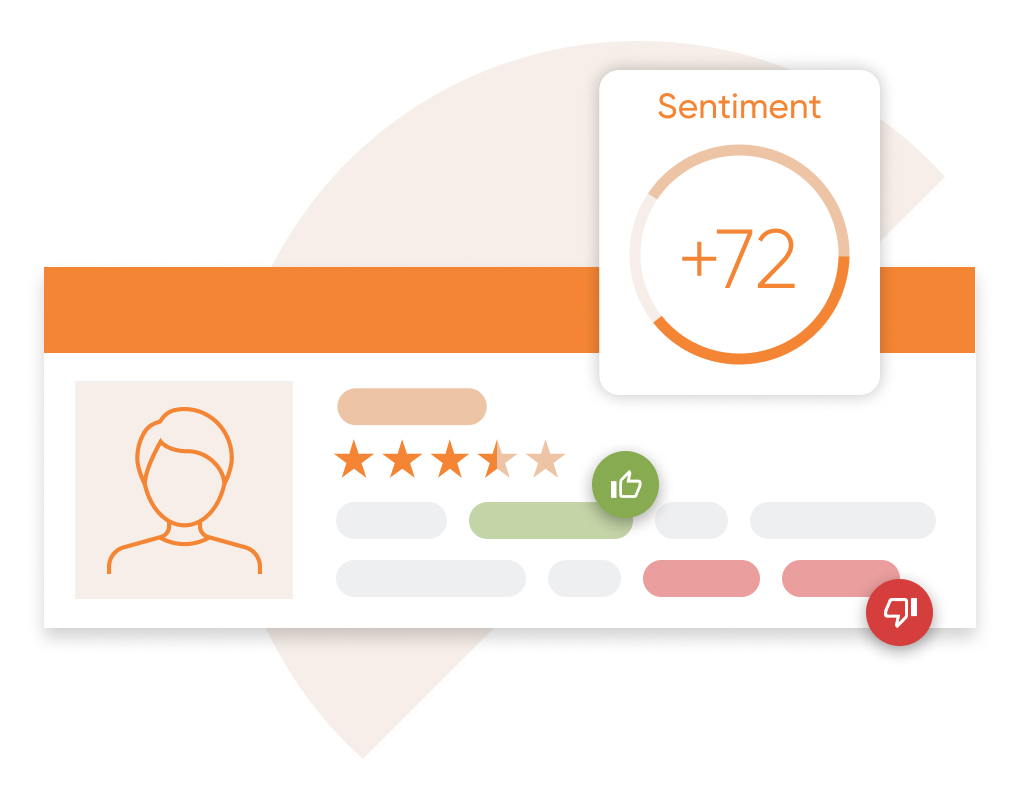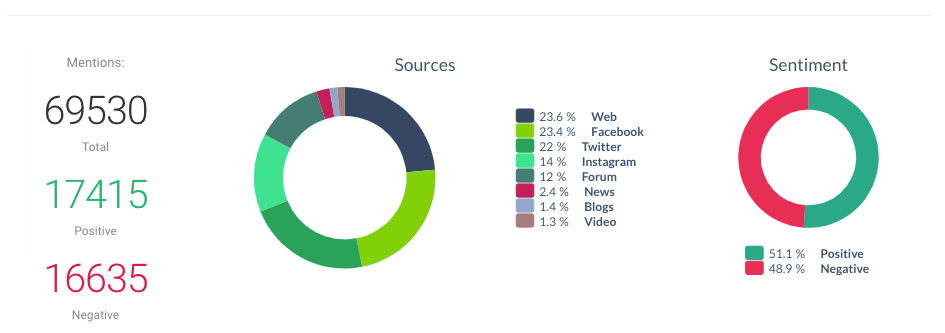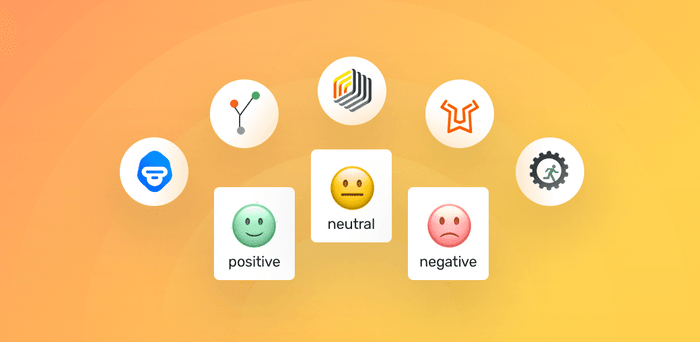Social media has become an integral part of our lives, allowing us to connect, share, and express our thoughts and opinions. With billions of users generating massive amounts of data daily, social media platforms have become valuable sources of information for businesses and organizations. Social media sentiment analytics refers to the process of extracting insights and understanding the sentiment expressed in social media data. In this article, we will explore the significance of social media sentiment analytics, its methodologies, challenges, applications, and future trends.
Introduction to Social Media Sentiment Analytics

Social media sentiment analytics involves analyzing the sentiment or emotions expressed by individuals on social media platforms such as Facebook, Twitter, Instagram, and LinkedIn. Sentiment analysis aims to determine whether a given piece of text is positive, negative, or neutral. It allows businesses to gauge public opinion, monitor brand reputation, and make data-driven decisions based on customer feedback.
Importance of Understanding Social Media Sentiment
In today’s digital age, social media plays a crucial role in shaping public opinion and influencing consumer behavior. Understanding social media sentiment is vital for businesses to gain insights into how their products, services, or brands are perceived by the public. Positive sentiment can boost brand loyalty and attract new customers, while negative sentiment can harm the reputation and lead to customer churn. By analyzing social media sentiment, organizations can proactively address issues, identify trends, and make informed decisions to improve their offerings.
How Social Media Sentiment Analytics Works
Social media sentiment analytics involves several steps, starting with data collection. It relies on specialized algorithms and natural language processing (NLP) techniques to extract sentiment from textual data. These algorithms classify text into positive, negative, or neutral categories based on predefined rules or machine learning models. Sentiment analysis can be performed at different levels, ranging from document-level sentiment to more granular aspect-based sentiment analysis.
Collecting Social Media Data for Sentiment Analysis
To perform sentiment analysis, social media data needs to be collected from various platforms. This can be done using application programming interfaces (APIs) provided by the platforms or by scraping publicly available data. Gathering a diverse and representative dataset is essential to obtain accurate sentiment analysis results.
Preprocessing and Cleaning Social Media Data
Social media data often contains noise, such as typos, slang, abbreviations, and hashtags. Before performing sentiment analysis, the data needs to be preprocessed and cleaned. This involves removing irrelevant information, handling punctuation, normalizing text, and addressing spelling variations. Preprocessing ensures that the sentiment analysis algorithms can accurately interpret the text.
Sentiment Analysis Techniques
Also, there are various techniques used in social media sentiment analysis, including:
Rule-Based Approaches
- Rule-based approaches rely on predefined linguistic rules and dictionaries to determine sentiment. These rules are often based on sentiment-associated words and patterns. However, rule-based approaches can be limited in their ability to capture nuanced sentiments and may require frequent updates to adapt to changing language trends.
Machine Learning Approaches
- Machine learning approaches train models on labeled datasets to classify sentiment. These models can learn from examples and generalize patterns to classify sentiment in a new text. Machine learning models, such as Naive Bayes, Support Vector Machines, and deep learning models like Recurrent Neural Networks (RNNs) and Convolutional Neural Networks (CNNs), have shown promising results in sentiment analysis.
Hybrid Approaches
- Hybrid approaches combine rule-based and machine-learning techniques to achieve more accurate sentiment analysis results. These approaches leverage the strengths of both methods to capture a wider range of sentiments and improve overall performance.
Challenges in Social Listening Sentiment Analysis

Social media sentiment analysis faces several challenges due to the unique nature of social media data:
Language and Slang
- Social media is characterized by informal language, slang, abbreviations, and misspellings. Sentiment analysis algorithms need to account for these variations and understand the context in which they are used.
Irony and Sarcasm
- Detecting irony and sarcasm in the text is challenging, as they often convey sentiments opposite to their literal meanings. Advanced NLP techniques, such as context analysis and sarcasm detection models, are required to accurately identify ironic or sarcastic expressions.
Contextual Understanding
- Understanding sentiment requires considering the broader context in which a statement is made. Ambiguous phrases, cultural references, and specific domain knowledge can significantly impact sentiment analysis results.
Data Volume and Velocity
- Social media platforms generate vast amounts of data in real-time. Analyzing this data promptly presents technical challenges, including data processing speed and scalability.
Benefits and Applications of Social Listening Sentiment Analytics
Also, social media sentiment analytics offers numerous benefits and applications for businesses and organizations:
Brand Reputation Management
- By monitoring social media sentiment, companies can proactively manage their brand reputation. Identifying and addressing negative sentiment can help prevent potential crises and maintain positive brand perception.
Product Development and Improvement
- Analyzing social media sentiment allows organizations to gather feedback on their products and services. Also, by understanding customer sentiments and preferences, businesses can make informed decisions to improve existing offerings or develop new ones.
Customer Service and Support
- Social media sentiment analysis helps organizations identify and respond to customer complaints, questions, and feedback. Promptly addressing customer concerns can enhance customer satisfaction and loyalty.
Market Research and Trend Analysis
- Social media sentiment analytics provides valuable insights into market trends, competitor analysis, and consumer preferences. This information can guide businesses in making strategic decisions and staying ahead in a competitive landscape.
Tools and Platforms for Social Media Sentiment Analysis

There are several tools and platforms available for social media sentiment analysis. Some popular ones include:
- Sentiment140
- Brandwatch
- Also, Hootsuite Insights
- IBM Watson Natural Language Understanding
- RapidMiner
- Lastly, AIM Insights
These tools provide features like sentiment classification, trend analysis, real-time monitoring, and customizable dashboards.
Case Study: Leveraging Social Media Sentiment Analytics to Boost Brand Reputation and Customer Engagement
A leading global cosmetics company was facing difficulties in managing its brand reputation across the different social media platforms. In addition to not able to reach the right insights about the customer’s feedback effectively across the media. With the gown in their competitors and the appearance of many new social media trends. They decided to use social listening technology to reach the right actionable insights.
Objective
The company needed to ably social listening technology for:
- Monitor the brand sentiment across the social media platforms.
- Identify the new trend in the industry, and how the target audience reacts to it.
- Enhancing the customer’s engagement by interacting with them in real time.
Methodology
- Data Collection: The brand started by collecting the data from the different social media platforms. Including posts, hashtags, and mentions. In addition to collecting data from the industry and beauty influencers.
- Preprocessing: The data was cleaned from the noise and incorrect inputs. Using models to remove the grammar and spelling mistakes, in addition to wrong hashtags and mentions.
- Sentiment Analysis: They used specialized models to analyze the sentiments of the customers. And categorizing it into positive, negative, and neutral.
- Real-Time Monitoring: The brand was able to monitor the results in real time through a live dashboard. To be able to react to any change that is happening, and take the right actions.
Outcomes
- Enhanced Brand Reputation: by knowing the product’s quality issues and working on enhancing them. The company was able to turn the negative sentiments into positive ones.
- Increased Customer Engagement: the company depended on the insights from social media, to build more effective engagement campaigns.
Conclusion
Social media sentiment analytics has emerged as a powerful tool for businesses to understand public opinion, monitor brand reputation, and make data-driven decisions. By analyzing the sentiments expressed on social media platforms, organizations can gain valuable insights into customer preferences, identify trends, and proactively address issues. The significance of social media sentiment analytics cannot be understated in today’s digital landscape, where social media plays a central role in shaping consumer behavior.
Also, to experience the transformative power of social media sentiment analytics firsthand, we invite you to request a demo from AIM Technologies. Discover how their solutions can help your business unlock valuable insights, enhance brand reputation, and drive growth. Take the first step towards leveraging social media sentiment analytics now!
FAQs
Why is understanding social media sentiment important for businesses?
Because it provides insights and data about the target audience’s real opinion about the business. In addition to the ability to enhance the business based on the audience’s feedback and suggestions.
Why is preprocessing and cleaning social media data essential before analysis?
To be able to analyze the data clearly without any incorrect information. And to faster the process of reaching the insights, and start to improve your strategies based on the right insights.
How can social media sentiment analytics benefit brand reputation management?
Through dating aware of your business reputation across the market and between the target audience. To be able to manage any change in your brand reputation work on enhancing it, and measure the strategy for that.
What role does sentiment analysis play in product development and improvement?
It tracks the opinions about the products and provides insights about the customer’s complaints. To be able to improve your products based on it, and enhance your strategies to be more effective and suitable to their needs.
What is the significance of contextual understanding in sentiment analysis?
It helps to reach the right true meanings behind the text, as it could change based on the conversations and situations. To be able to know how the audience is thinking about your business.




